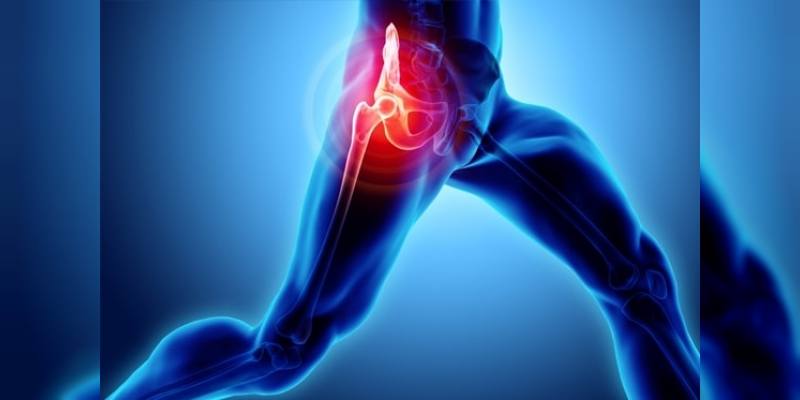Arthroscopy is a closed surgery method that allows diagnosis and treatment by means of a high-resolution camera and monitor system, which can be entered through small holes of 0.5 cm instead of making large incisions. As in open surgery, large incisions are not opened and the damaged area is not looked at with the naked eye and intervened. Camera and special instruments are inserted through small openings to help the treatment and monitor the operation area. It has many advantages such as the comfort it gives to the patient and the surgeon during the operation and also to the possibility of rapid recovery after the operation.
Arthroscopy can be preferred for knee, shoulder, wrist, ankle and hip joints. However, unlike other joints, hip arthroscopy is technically more difficult and requires experience because the joint is deeper, the joint capsule is thick and the range of motion is limited.
Hip Osteoarthritis and Hip Arthroscopy
The hip joint consists of the pelvis’s hole and the head of the thigh. These structures are covered with cartilage layers so that they can move freely on each other. If the cartilage tissue is damaged by age, force and genetic factors, osteoarthritis may occur. If there is severe wear, if the patient complains of pain too much to sleep, difficulty in walking, hip replacement surgery may be necessary. However, hip arthroscopy can be used to prevent further damage to the joints and restore their healthy functions.
In which conditions can hip arthroscopy be applied?
Femoroacetabular Impingement Syndrome: If there is an extra hump-like protrusion on the neck of the femur and / or the edges of the pelvis forming the joint are larger and deeper than necessary, the bones may cause more pressure and compression than normal conditions during movements. This compression and congestion can also cause degeneration and osteoarthritis of the joint cartilage over time. With hip arthroscopy, the compression of the bones that create compression in both bones can be shaved successfully and the compression can be removed.
Labrum Ruptures: There is a meniscus-like C-shaped tissue called “labrum” in the knee around the pelvis (acetabulum) that acts as a gasket and increases the depth of the joint. Compression syndrome or repetitive forceful movements may result in rupture of the tissue and may cause pain in certain movements of the hip. With hip arthroscopy, these ruptures can be repaired, reconstructed, or removed.
How is Hip Arthroscopy carried out?
Hip arthroscopy is slightly different from other arthroscopy methods. The patient is placed on the traction table and the hip joint is opened about 1 cm. The necessary treatment is then performed by inserting both camera and surgical instruments through the holes approximately at the size of the pen tip. The camera’s high resolution and zoom feature make all textures clear and large. In this way, diseased tissues can be diagnosed and treated much better. When performing hip arthroscopy, the device that regulates the fluid pressure given to the joint called artropump, longhand tools specially designed for arthroscopy, motorized shavers, electrothermal cutting, and firming instruments are used. The operation time depends on the procedure. It usually takes between 45 minutes and 2 hours.
Advantages of Hip Arthroscopy
The most important advantage of arthroscopy is that the opened incisions are very small. A smaller incision means faster healing, less pain, more aesthetic scarring, and a more comfortable process. On the other hand, it provides both surgeon and patient comfort during surgery. Security is higher. The surgeon can easily see the operation area that s/he cannot see even in open surgery thanks to the high resolution and zoom capability of the special arthroscopy cameras.
- It provides more detailed imaging during surgery.
- It provides the surgeon with comfort and safety.
- The risk of infection and other complications is less than in open surgery.
- Postoperative pain is much less than open surgery.
- The postoperative procedure is very comfortable.
- Recovers faster than open surgery.
- Minimal and aesthetic scar.
After Hip Arthroscopy
After hip arthroscopy, patients are discharged on the same day or the following day. There is usually no situation that requires hospitalization. Pain is less than open surgery. It can be easily controlled with simple painkillers. There may be pain in the ankle due to traction, which will cease in a few hours.
Your doctor will prescribe you medications to use for about 10 days to ensure a comfortable recovery. Medication should be used regularly.
You should use crutches for up to 4-8 weeks. Your doctor may extend this period depending on your situation.
Water should not be touched until the sutures are removed and this area should be protected against infections.
The regular practice of the doctor’s exercises is in line with a fast and healthy recovery process. Physical therapy support will also be very useful.








